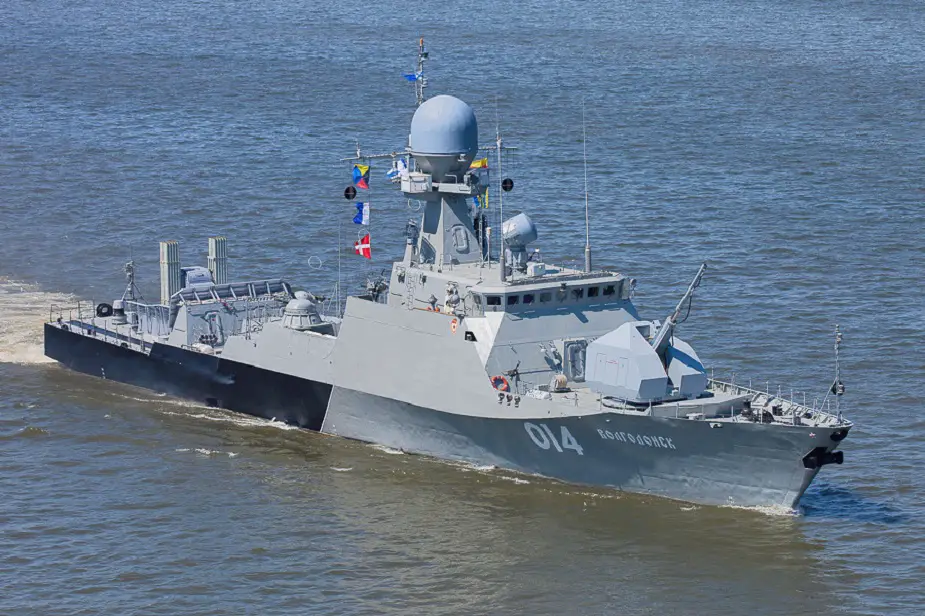Russian Navy tests artificial intellect control
The Russian Navy has tested a new control system with artificial intellect elements. Air, ground and sea forces were for the first time united into a single information contour at an exercise in the Caspian Sea, the Izvestia daily writes.
 Volgodonsk (Picture source: mil.ru)
Volgodonsk (Picture source: mil.ru)
Target data was loaded into the system in real time for the command to select the weapon. For example, objects detected by marines were destroyed by seaborne Kalibr and Yakhont cruise missiles. The exercise engaged over three dozen warships and close to 1.5 thousand men of the Caspian flotilla.
The snap check engaged 35 warships of the flotilla, including the Tatarstan missile ship, the Astrakhan, the Grad Sviyazhsk, the Uglich, the Volgodonsk, the Makhachkala small missile and artillery ships, as well as minesweepers, artillery boats and supply vessels. Over 1.5 thousand flotilla navymen, including marines, operated on land. The check had to verify the readiness to ensure security in Central Asia where major terrorist threats exist, the Defense Ministry told the newspaper.
For the first time Caspian flotilla warships and ground forces engaged a multi-contour reconnaissance-strike combat system. It was in charge of information exchange between headquarters, firepower and scouts. The Caspian flotilla force comprised warships, barrel and rocket artillery, and aviation. Marines and drones were also engaged in the reconnaissance force. They had to determine target coordinates.
The information was transmitted to the command post and analyzed by the automatic arms and troops control system with artificial intellect elements. In particular, the electronics provided real-time recommendations to the commander on the choice of weapons for the destruction of hardware and troops accumulations.
In order to provide a maximum objective picture of the theater of warfare, the system collected and processed information from video cameras and radars, warships, aircraft and drones, as well as marines. It was decided to deliver a strike with Kalibr and Yakhont missiles from small missile ships. The command controlled the strikes with the use of drones.
There were electronic missile launches, but they tested and confirmed the effectiveness of the multi-contour reconnaissance-strike system.
The time interval between target detection and destruction was not disclosed. However, it did not exceed 3-4 minutes at the drills of the Central Military District in South Urals. No precision weapons were engaged there. The conditional adversary was attacked from mortars, barrel and rocket artillery, heavy Solntsepek flamethrowers, Su-24M frontline bombers and fire support helicopters.
"The new hardware radically decreases the troops control cycle. The detection of the adversary, decision-making and the destruction take place in close to real time. Such combat intensity provides initiative on the battlefield and at sea," expert Viktor Murakhovsky told the Izvestia.
A single integrated air defense automatic control system has been recently deployed in Crimea. It comprises the firepower of antiaircraft missile units, a radio-technical regiment, the Black Sea fleet and its air defense, aviation, as well as air defense of motorized infantry units. All air force and defense formations deployed on the peninsula are fully armed with the latest weapons, including S-400 Triumph and Pantsir-S missile guns, the Izvestia said.
© Copyright 2019 TASS. All rights reserved. This material may not be published, broadcast, rewritten or redistributed.


























